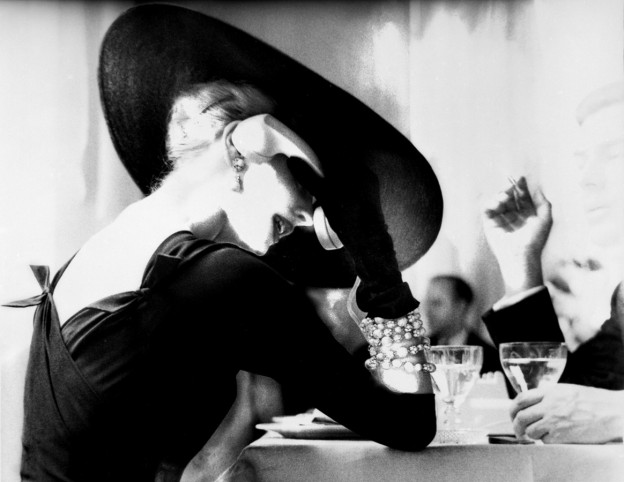Let’s get one thing straight from the outset: Cocktail Culture is not about cocktails — at least not as such. If you expect to learn about the evolution of such fabled concoctions as the Manhattan, the Sazerac or the Martini, you will be disappointed. For that, you’re better off reading David Wondrich’s Imbibe (preferably with a cool drink at your side).
The emphasis in this entertaining exhibit, Cocktail Culture: Ritual and Invention in American Fashion, 1920-1980 at the Rhode Island School of Design’s Museum of Art, is on the culture surrounding alcohol and drinking. Alcohol, and not any one specific drink, is posited as a lubricant for social change. The show includes everything from gleaming home cocktail kits and glassware to matchbooks and furniture. But it is the fabulous dresses, handbags, men’s shirts and other accoutrements that are its focal point.
Curated by Laurie Brewer, Joanne Ingersoll and Kate Irvin, the exhibit itself is arranged rather like a cocktail party with mannequins grouped like so many era-appropriate cliques around the room: flappers from the twenties mingle with other flappers, stylish ladies of the post-Prohibition thirties make small talk with others of their kind, colorful disco mavens dance with fellow disco mavens. When you enter the gallery, you are greeted by what is arguably the most famous party dress of them all: the Christian Dior black cocktail dress from 1954, famously worn by Audrey Hepburn in Breakfast at Tiffany’s. With it’s gracefully flowing fabric, it is no less glamorous on its own.
While the Dior dress is a stunner, it is a testament to the strength of the collection that it doesn’t outshine the rest of the dresses on display, which are by some of the great designers of the twentieth-century, from Coco Chanel to Elizabeth Arden. And then there are the hats! No less thrilling.
Though the sheer variety of objects on display is dizzying, the show is more than just a collection of bright young (or not so young) things. Yes, there are beautiful examples of Art Deco design, post-war Tiki exoticism, and cool fifties modernism. Ultimately, what gives this exhibit its kick is what these various objects say about changes in sociability. For instance, one of the unintended consequences of Prohibition was that it brought alcohol into the domestic sphere, giving birth to the cocktail hour in which women played a newly integral role. Through the changes in design and fashion, which are so beautifully arrayed in this exhibit, you can trace various shifts in twentieth-century social and sexual mores.
Cocktail Culture is a fascinating trip nearing the end of its time: it runs through July 31 in Providence.




Pingback: A Food Tour of Concord, MA: Part Four | Public Radio Kitchen